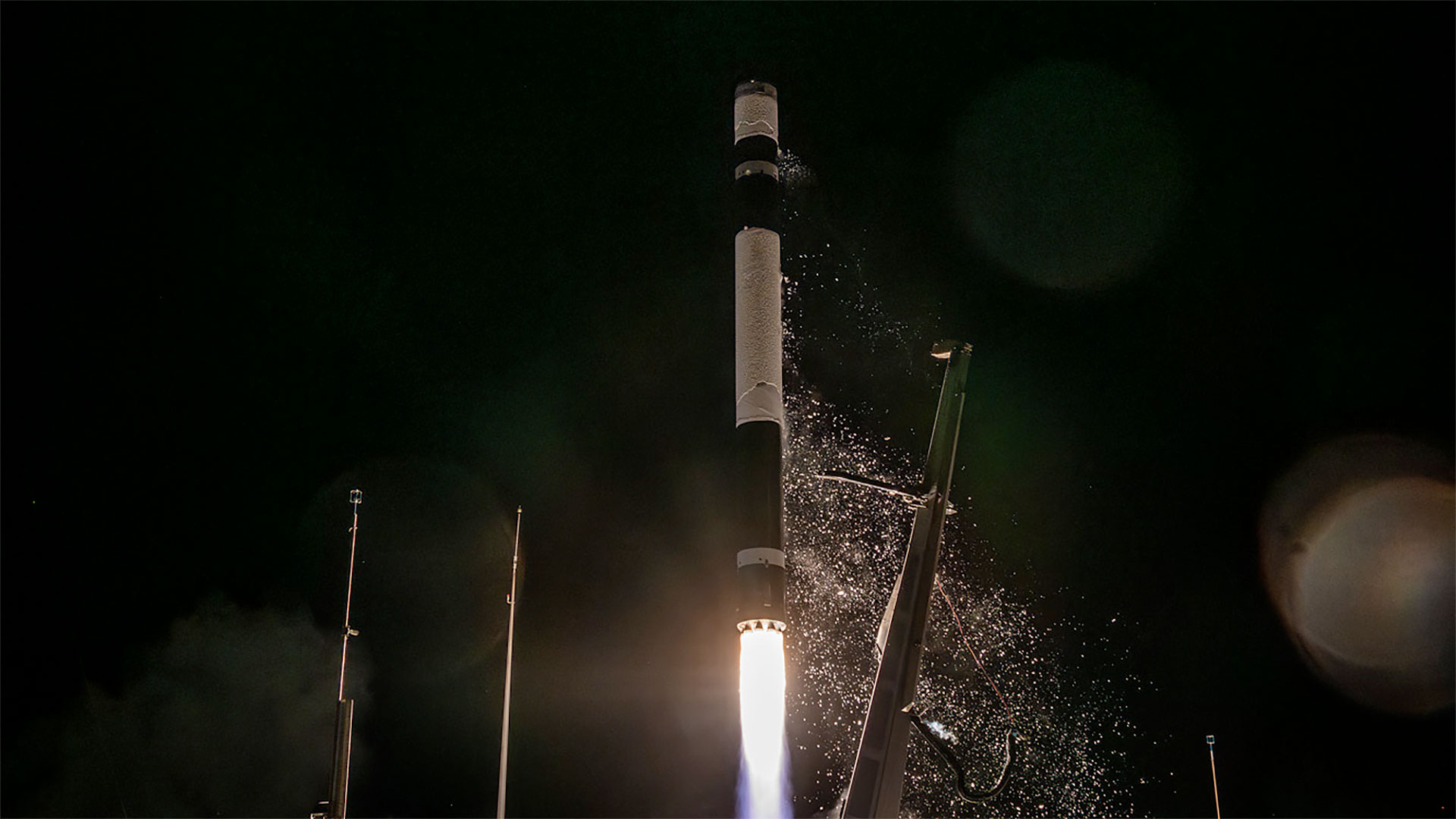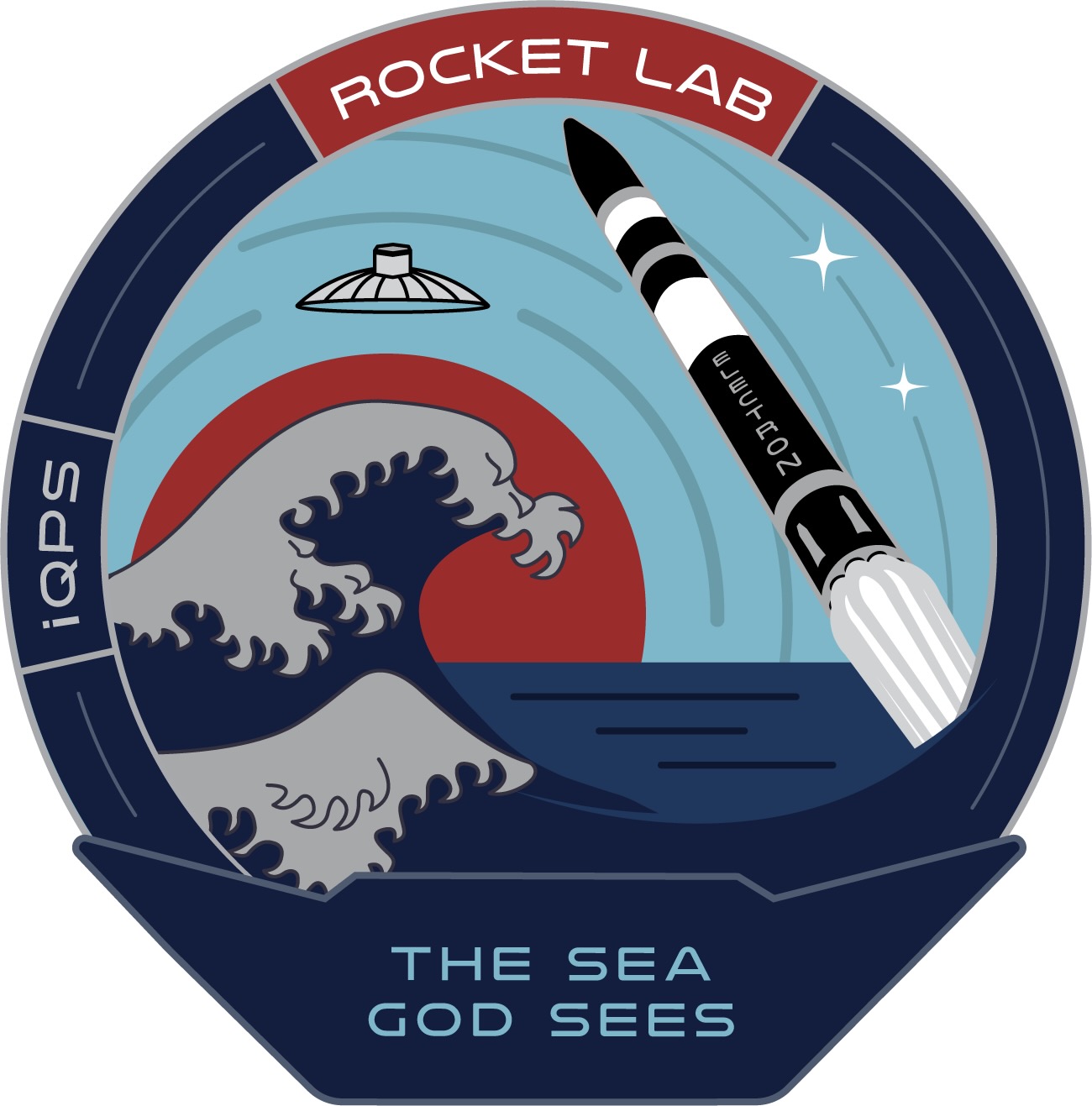
Rocket Lab launched an Earth-observing satellite for the Japanese company iQPS early Saturday morning (May 17).
An Electron rocket lifted off from Rocket Lab's New Zealand site on Saturday at 4:17 a.m. EDT (0817 GMT; 8:17 p.m. local New Zealand time).

Rocket Lab called the mission "The Sea God Sees." That was a reference to the satellite going up, which iQPS nicknamed Wadatsumi-I after a water deity in Japanese mythology.
Wadatsumi-I is a synthetic aperature radar (SAR) satellite, so it will be able to image Earth at all times of day and through cloud cover. The Electron deployed the spacecraft into a 357-mile-high (575-kilometer-high) circular orbit 50.5 minutes after liftoff. The craft then joined iQPS' growing SAR constellation.
"To date, nine QPS-SAR satellites have been launched, and iQPS aims to establish a constellation of 36 satellites," Rocket Lab wrote in the mission's press kit, which you can find here.
"This will enable the delivery of a 'NearReal-Time Data Provisioning Service,' allowing for the observation of specific regions worldwide at an average interval of 10 minutes," the company added. "This will make it possible to collect continuous images as data, and to accumulate data not only on 'Stationary Objects' such as land and buildings, but also on 'Moving Objects' such as vehicles, ships, and cattle and livestock."

"The Sea God Sees" was the sixth mission of 2025 and 64th overall flight for the 59-foot-tall (18-meter-tall) Electron.
Get the Space.com Newsletter
Breaking space news, the latest updates on rocket launches, skywatching events and more!
It was the third Electron launch for iQPS and the second of eight planned missions across 2025 and 2026 to build out the company's Earth-observing network, according to Rocket Lab.
Join our Space Forums to keep talking space on the latest missions, night sky and more! And if you have a news tip, correction or comment, let us know at: community@space.com.

Michael Wall is a Senior Space Writer with Space.com and joined the team in 2010. He primarily covers exoplanets, spaceflight and military space, but has been known to dabble in the space art beat. His book about the search for alien life, "Out There," was published on Nov. 13, 2018. Before becoming a science writer, Michael worked as a herpetologist and wildlife biologist. He has a Ph.D. in evolutionary biology from the University of Sydney, Australia, a bachelor's degree from the University of Arizona, and a graduate certificate in science writing from the University of California, Santa Cruz. To find out what his latest project is, you can follow Michael on Twitter.
You must confirm your public display name before commenting
Please logout and then login again, you will then be prompted to enter your display name.
